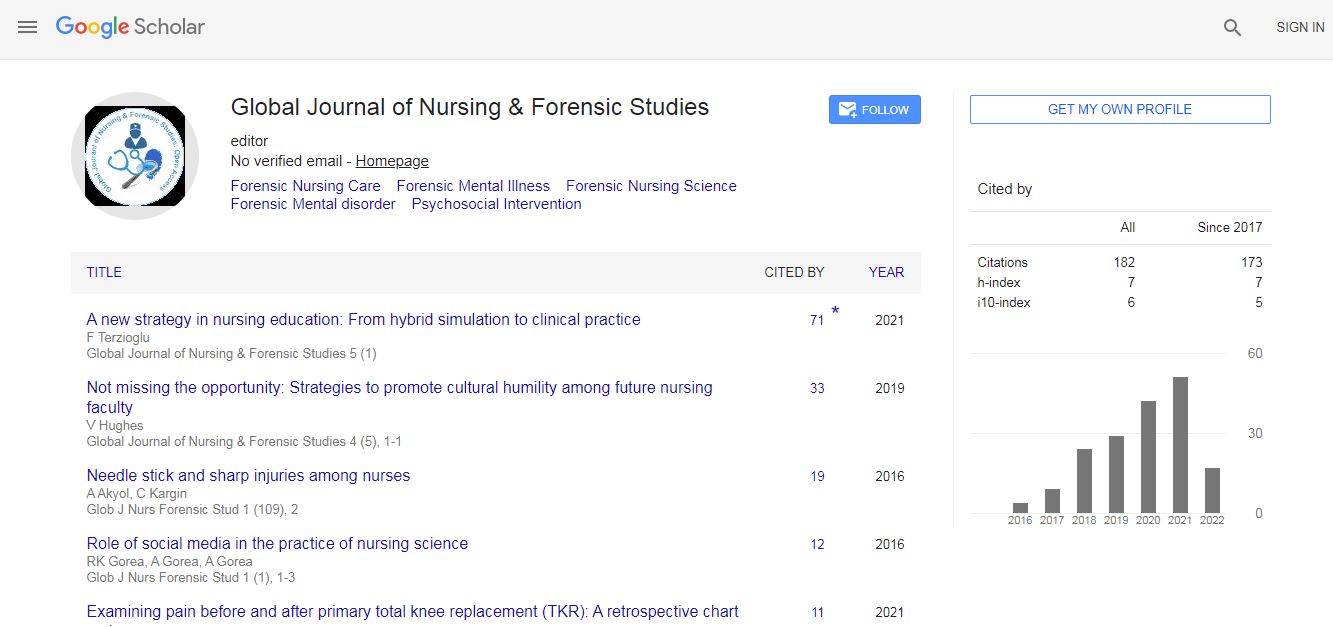Our Group organises 3000+ Global Conferenceseries Events every year across USA, Europe & Asia with support from 1000 more scientific Societies and Publishes 700+ Open Access Journals which contains over 50000 eminent personalities, reputed scientists as editorial board members.
Open Access Journals gaining more Readers and Citations
700 Journals and 15,000,000 Readers Each Journal is getting 25,000+ Readers
Google Scholar citation report
Citations : 82
Optometry: Open Access received 82 citations as per Google Scholar report
Indexed In
- Google Scholar
- RefSeek
- Hamdard University
- EBSCO A-Z
- Euro Pub
- ICMJE
Useful Links
Recommended Journals
Related Subjects
Share This Page
Peripheral refraction-yes or no
3rd International Conference and Expo on Optometry & Vision Science
David Berkow
Ulster University, UK
Keynote: Optom open access
Abstract
It is predicted that by the year 2050, half of the world's population (five billion people will be myopic and that nearly one billion will be at a high risk of threatening ocular pathology. The first link between peripheral refraction and myopia, in humans, was found in 1971 by Hoogerheide and his colleagues, although this issue was studied even Early by Earl Smith three using monkeys. Eye care practitioners today must not only think in terms of the short-term effect of treatment but also more importantly, the long term effect of the treatment. Prescribing spectacles may give an immediate positive result by enabling the child to see well but this will not stop the short sightedness to progress. Therefore we must treat children who are myopic by trying to retard the progression of the myopia. There are a number of treatments, two of which use contact lenses, either soft contact lenses or rigid gas permeable contact lenses. The treatment when using contact lenses is based on defocus at the periphery of the retina. We call this treatment pattern myopia control. This presentation will explain in detail what peripheral defocus is all about, the different types of peripheral defocus, how it applies to the different types of contact lenses and how important this issue is as far as treating myopic children. It will explain why and how myopic defocus can retard the increase in axial length of the eye, which is the major reason for the increase in myopia. In conclusion, children who have been detected as having the increased potential of being myopic should be given the option of being treated by means of myopia control in order to try to retard the progression and thus trying to avoid the child of being included in the risk group of potentially developing any ocular pathology caused by "high myopia". Recent Publications 1. Kang P (2018) Optical and Pharmacological strategies of myopia control. Clinical and Experimental Optometry 101 (3):32- 332. 2. Sankaridurg P (2017) Contact lenses to slow progression of myopia. Clinical and Experimental Optometry 100 (5):432-437. 3. Zhouyue L, Cui D, Hu Y, Ao S, Zeng J and Yang X (2017) Choroidal thickness and axial length changes in myopic children treated with orthokeratology. Contact Lens and Anterior Eye 40 (6): 417-423. 4. Wolffsohn J S, Calossi A, Cho P, Gifforg K, Jones L, et al. (2016) Global trends in myopia management attitudes and strategies in clinical practice. Contact Lens and Anterior Eye 39 (2):106-116. 5. Smith M and Walline J J (2015) Controlling myopia progression in children. Adolescent Health, Medicine and Therapeutics 6: 133-140.Biography
David Berkow is an optometrist who has been in private practice since 1978. His main passion is fitting contact lenses both for cosmetic reasons but especially when required for medical reasons as in cases of keratoconus, dry eye syndrome, extreme prescriptions and is very interested in myopia control via the use of contact lenses. David is invited to lecture extensively both nationally and also internationally. David qualified as an optometrist in 1978 and has since completed his Masters degree in Optometry at Ulster University in Ireland and is now in the process of completing his Doctorate in Optometry at Aston University.

 Spanish
Spanish  Chinese
Chinese  Russian
Russian  German
German  French
French  Japanese
Japanese  Portuguese
Portuguese  Hindi
Hindi 